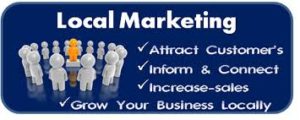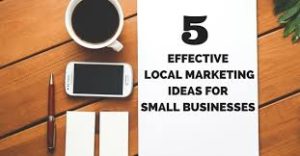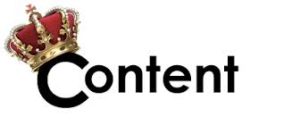Leaflet advertising can be a great way to reach your target audience, without the need for expensive digital wizardry. It can also deliver excellent results.
So here is why leaflet advertising still gives your business an advantage.
In an age of Facebook, Google Ads, and all things digital, it can be easy to overlook traditional marketing techniques. Especially those that have proven effective since well before we all had a smartphone in our pockets. So what are the leaflet advertising advantages and disadvantages?
Local Targeting with Leaflets
Distributing leaflets gives you complete control over exactly who you wish to target. You can convey information about your product or service to your audience directly through their letterbox.
 This can be of huge benefit to local businesses, as unlike online advertising, you are guaranteed to be seen by the people in that location using just one marketing method. Whereas online you would need to use a range of ads on different search engines such as Google and Bing, or several social media channels to ensure that you are connecting with your target audience on the medium which they use.
This can be of huge benefit to local businesses, as unlike online advertising, you are guaranteed to be seen by the people in that location using just one marketing method. Whereas online you would need to use a range of ads on different search engines such as Google and Bing, or several social media channels to ensure that you are connecting with your target audience on the medium which they use.
Convey more Information with Leaflet Advertising
When you use digital marketing techniques such as Google Ads you usually have just a few characters to use to get your message across. Thus competing with thousands of other businesses, all trying to be unique in just a couple of sentences.
You are also then relying on taking someone from your advert to a website, and then to a contact form or email.
The advantage of a leaflet advertising is that it allows you to convey far more information in one go. You can showcase your service, display case studies, give pricing information, and tell your potential customer about how you can help all in one well-designed leaflet.
Cost Effective Marketing Strategy
One of the biggest advantages of leaflet advertising is just how affordable it is. The simple cost of delivery when compared to the price of online advertising design, costs of advertising placement, plus landing pages, offers a considerably better return on your investment.
In addition, once you have designed and printed your leaflets, they can be used for various functions. For example; you may wish to use them for direct delivery, for distribution at local events, when you go to networking meetings, or for trade shows.
How To Get it Right
While we have outlined the considerable advantages of leaflet or flyer advertising above, just like a digital strategy, you do need to ensure that your plan of action and materials are up to scratch. A badly designed leaflet is likely to be discarded before it’s even read, and poor targeting will not yield the best results either.
Therefore it is worth putting time and effort into understanding your buyer personas and target audience. For example, if you are offering a service which is only of benefit to homeowners, there is no point in distributing your materials in an area where most people rent. Or if your flyer does not convey clear information about your product or service, it’s unlikely to catch the attention of the person reading it.
The Future of Leaflets in a Digital Age
While it’s clear that leafleting does offer you a route to market directly to your customer base. It is also true that you need an online presence to back up your efforts, such as a well-designed website, and social media presence. However, your flyers or leaflets can be the perfect way to enhance your online presence without the need for expensive online ads.
Get in touch today to discuss a leafleting campaign with Hallway Distribution




















 If you are selling big ticket items like home improvements an A4 leaflet should normally be the minimum allowing you to include large images of the products you’re offering. If your offer is simple and your text short and sweet, then an A5 leaflet will be fine. But if you can afford it, the bigger the leaflet the louder the message.
If you are selling big ticket items like home improvements an A4 leaflet should normally be the minimum allowing you to include large images of the products you’re offering. If your offer is simple and your text short and sweet, then an A5 leaflet will be fine. But if you can afford it, the bigger the leaflet the louder the message.